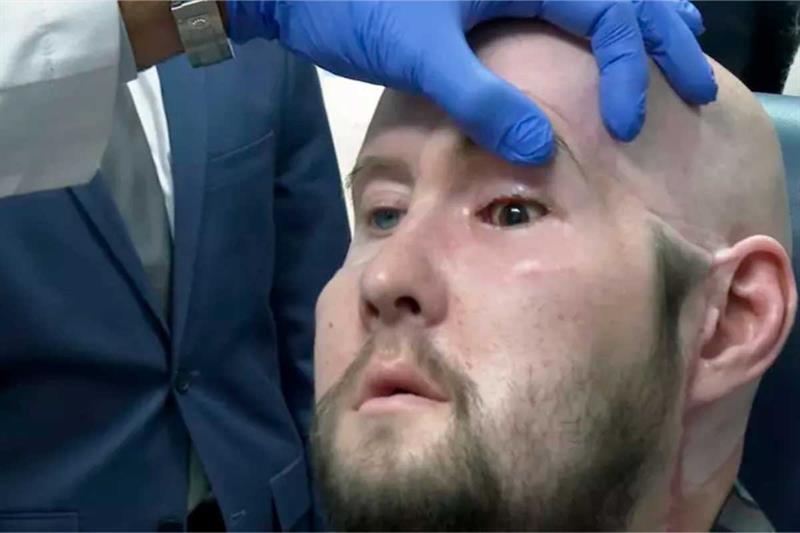New hope for the blind as NYU surgeons conduct world’s first whole eye transplant
Surgeons at NYU Langone Health have achieved a medical breakthrough by performing the world’s first full eye transplant.
The operation was carried out on Aaron James, who had lost most of his face and one eye after an accident with high-voltage power lines.
Surgical teams hoped that replacing the missing eye would support the transplanted eye socket and lid and achieve better cosmetic results for James’s new face.
The success of the surgery is still uncertain, and it is far too early to know if James will ever regain his vision with his new left eye.
Nevertheless, James is recovering well from the dual transplant, which took place last May, and his donated eye showed no signs of rejection moments after the operation.
“It feels good. I still don’t have any movement in it yet. My eyelid, I can’t blink yet. But I’m getting sensation now,” James told the Associated Press as doctors examined his progress recently.
“You got to start somewhere, there’s got to be a first-person somewhere,” added James, 46, of Hot Springs, Arkansas.
READ ALSO: Woman with rare brain condition collapses any time she sees someone ‘attractive’
“Maybe you’ll learn something from it that will help the next person.”
Today, transplants of the cornea – the clear tissue in front of the eye – are common to treat certain types of vision loss. But transplanting the whole eye – the eyeball, its blood supply and the critical optic nerve that must connect it to the brain – is considered a moonshot in the quest to cure blindness.
Whatever happens next, James’s surgery offers scientists an unprecedented window into how the human eye tries to heal.
“We’re not claiming that we are going to restore sight,” said Dr Eduardo Rodriguez, NYU’s plastic surgery chief, who led the transplant.
“But there’s no doubt in my mind we are one step closer.”
Some specialists had feared the eye would quickly shrivel like a raisin. Instead, when Rodriguez propped open James’s left eyelid last month, the donated hazel-coloured eye was as plump and full of fluid as his own blue eye.
Doctors see good blood flow and no sign of rejection.
Now researchers have begun analyzing scans of James’s brain that detected some puzzling signals from that all-important but injured optic nerve.
One scientist who has long studied how to make eye transplants a reality called the surgery exciting.
“It’s an amazing validation” of animal experiments that have kept transplanted eyes alive, said Dr Jeffrey Goldberg, chair of ophthalmology at California’s Stanford University.
The hurdle is how to regrow the optic nerve, although animal studies are making strides, Goldberg added.
He praised the NYU team’s “audacity” in even aiming for optic nerve repair and hopes the transplant will spur more research.
“We’re really on the precipice of being able to do this,” Goldberg said.
James was working for a power line company in June 2021 when he was shocked by a live wire. He nearly died. Ultimately, he lost his left arm, requiring a prosthetic. His damaged left eye was so painful it had to be removed. Multiple reconstructive surgeries couldn’t repair extensive facial injuries including his missing nose and lips.
James pushed through physical therapy until he was strong enough to escort his daughter Allie to a high school homecoming ceremony, wearing a face mask and eye patch. Still, he required breathing and feeding tubes and longed to smell, taste and eat solid food again.
“In his mind and his heart, it’s him – so I didn’t care that, you know, he didn’t have a nose. But I did care that it bothered him,” said his wife, Meagan James.
Face transplants remain rare and risky. James’s is only the 19th in the US.
Follow the Neptune Prime channel on WhatsApp: https://whatsapp.com/channel/0029Va74ZvU2v1IqKByXoX3d
Do you have breaking news, interview request, opinion, suggestion, or want your event covered? Email us at neptuneprime2233@gmail.com


